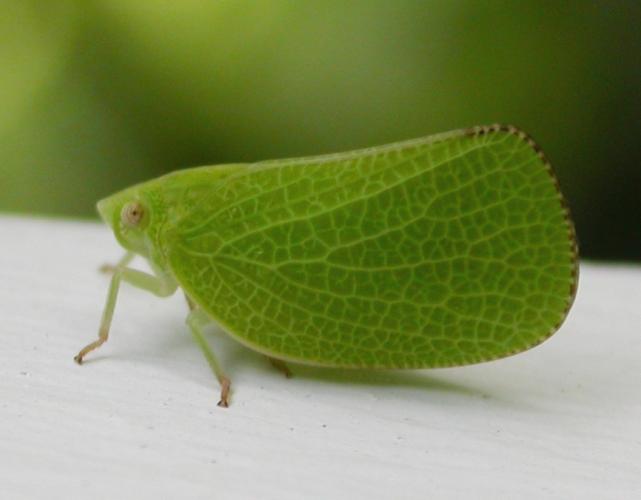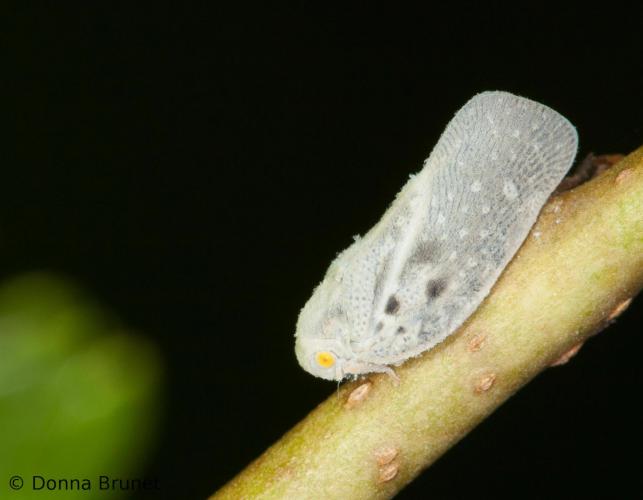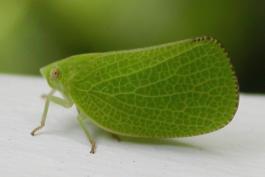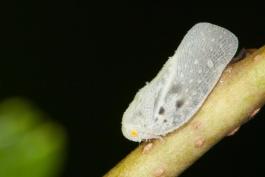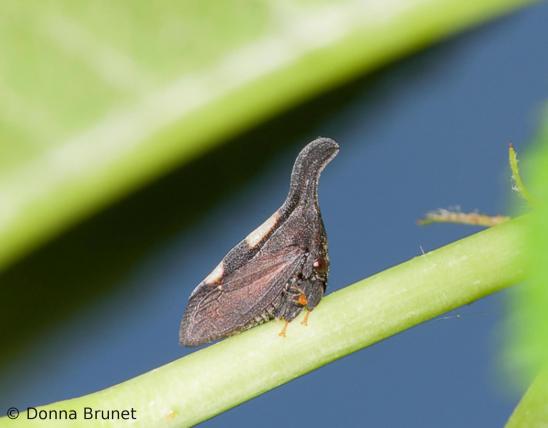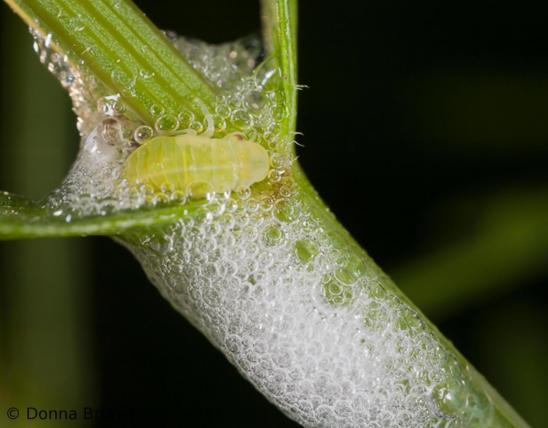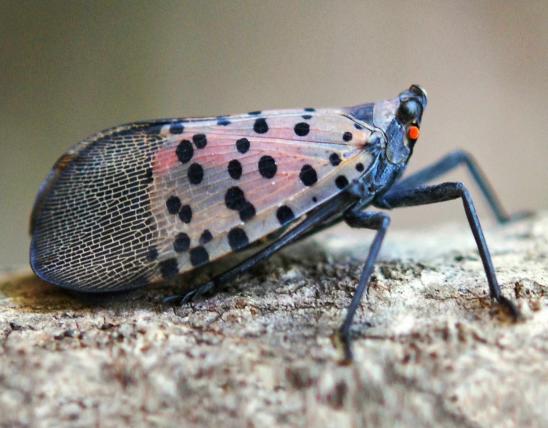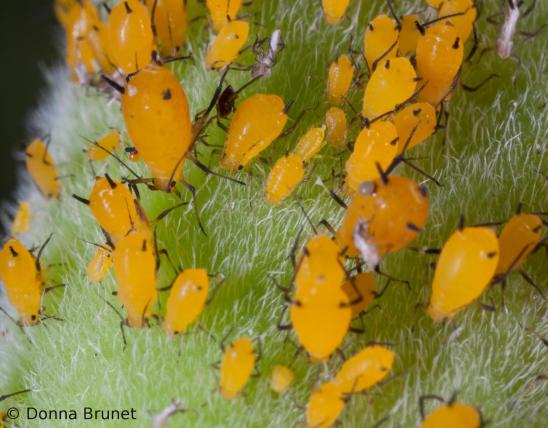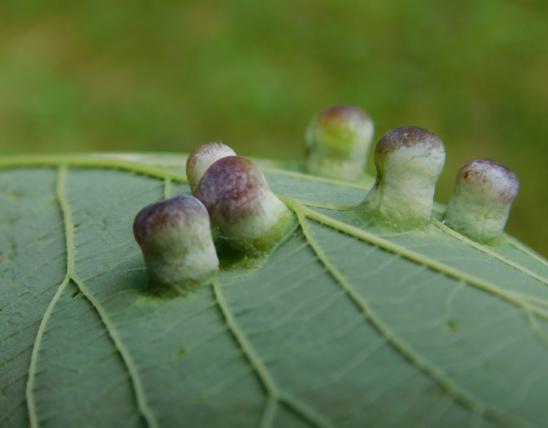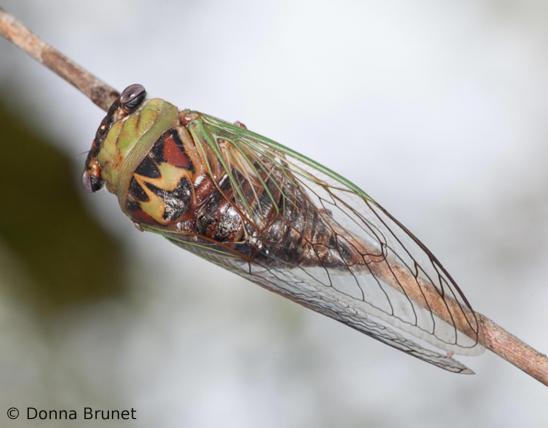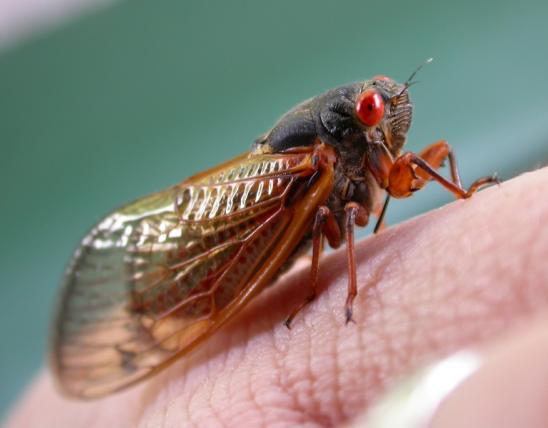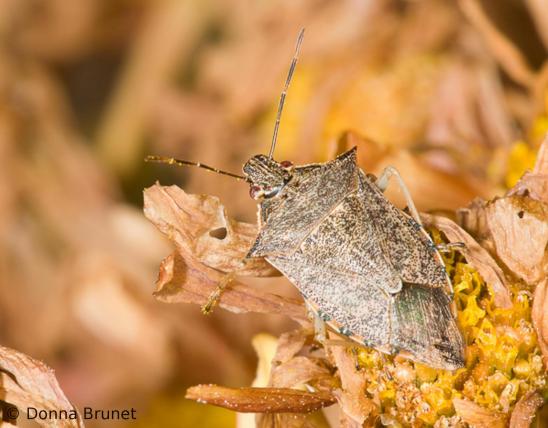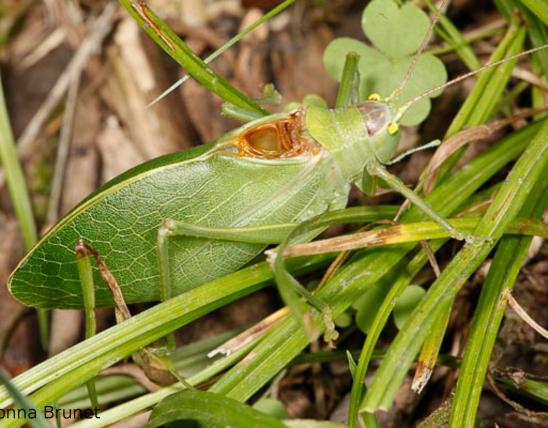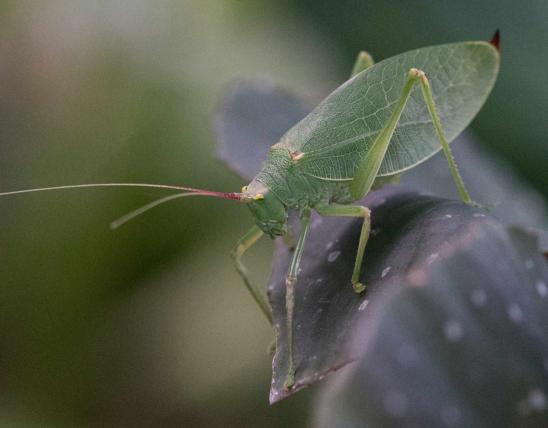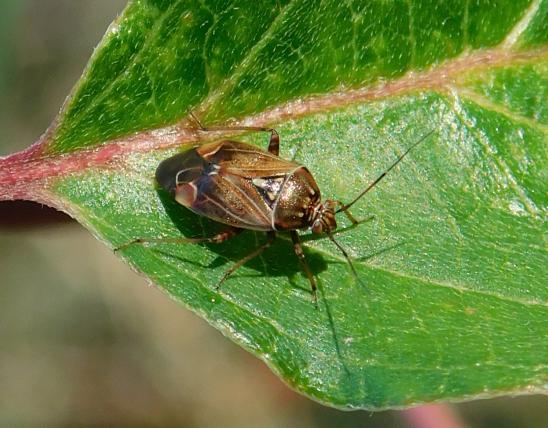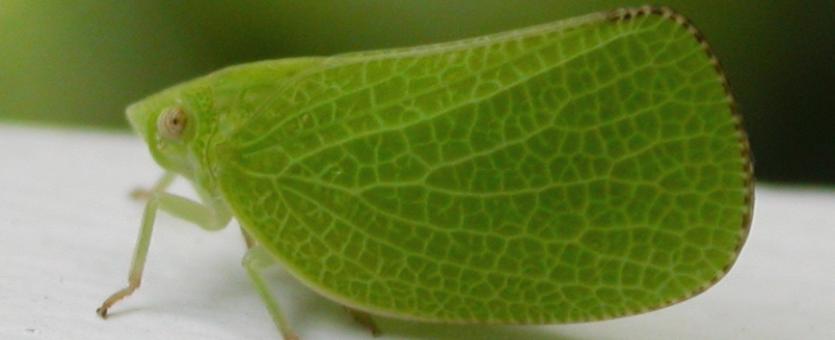
There are 13 families of planthoppers in North America north of Mexico, so this is a large and diverse group.
Planthoppers are small jumping insects that often have unusually angled or pointed head shapes. Their antennae are attached to their faces below the eyes, on the sides of the head. The two basal segments of each antenna are thick and rather bulbous, while the outer segment is a very thin bristle. The wings of some are large enough to make them resemble tiny moths, caddisflies, or grasshoppers, while the wings of others are barely long enough to cover the first few segments of the abdomen.
Color varies from camouflage greens, tans, browns, grays, and black to pinks, beige, blue, teal, and other unusual colors. Most have mottled patterns, while others have bold stripes or bands.
Nymphs vary a lot, too. Some are covered with a cottony waxy coating for protection.
Because this is a large and diverse group, planthoppers may best be identified by determining that they are not treehoppers, leafhoppers, or spittlebugs/froghoppers:
- Treehoppers have an enlarged pronotum (shieldlike part just behind the head) that extends backward to cover the abdomen; often it is shaped to resemble a thorn or wart on a twig.
- Leafhoppers have 1 or more rows of small spines on the hind tibiae (shin-like segments). Their bodies tend to be parallel-sided or taper toward the rear.
- Spittlebugs and froghoppers are a lot like leafhoppers but have only 1 or 2 stout spines on the hind tibiae (shin-like segments), plus a small ring of spines at the outer tip of that leg segment. Many species’ bodies are widest at the hind end (a little like a resting frog, hence the name froghopper). Larvae live in bubble shelters on plant stems.
Length: most species are less than ½ inch (10 mm).
Statewide. Different species may have different distributions within the state, based on the ranges of their favorite food plants.
Habitat and Conservation
Planthoppers are usually found near their individual food plants. Some species are polyphagus (eat many kinds of foods), while others are limited to certain types of plants. Some feed on woody plants, others on nonwoody plants.
Many planthoppers prosper most during wetter-than-average years and decline after a drought. Some entomologists have noted that planthoppers seem to be most numerous in ecologically stable habitats, such as wet prairies or wetlands.
Some species are attracted to lights at night.
Food
Like other hoppers, planthoppers have their mouthparts configured like a straw, which is inserted into plants and used for drinking sap. Many species can eat a wide range of plants, while others are limited to oaks, for instance, or grasses. The nymphs of some species live underground or beneath loose tree bark, where they may be feeding on roots and/or fungus.
Life Cycle
Like other true bugs, planthoppers begin life as an egg and then, growing, undergo a number of immature stages (nymphs) before a final molt renders them a winged, sexually mature adult.
Human Connections
Although they feed on plants, few planthoppers are considered pests of crops or landscaping plants. They generally only cause problems when the occur in large numbers or when they transmit viruses or other pathogens from one plant to another. Otherwise, they usually only cause stippling (dots) or some bud malformation.
One planthopper that is a serious pest is the brown planthopper (Nilaparvata lugens), which damages rice crops in other parts of the world.
Several tropical species of planthoppers have remarkably large, upturned snouts. These elongated or inflated structures were mistakenly thought to emit light when the insect was alive, and 18th-century European scientists named them lanternflies. Their scientific names for several these tropical planthoppers still remain, retaining words like “phosphorea,” lanternaria,” and “candelaria.” The superfamily name, Fulgoroidea, comes from a genus named during this time, based on Fulgora, a Roman goddess of lightning.
The spotted lanternfly (Lycorma delicatula), a native of Asia, has not yet been found in Missouri, but it is present in several eastern states. This large planthopper has the potential to damage our forests and food supply by feeding destructively on trees and crops. In addition to damaging native forest trees, it could have an especially devastating effect on cultivated grapes and fruit and nut trees.
Ecosystem Connections
Douglas Tallamy has written that "a plant that has fed nothing has not done its job." Most birds, he points out, cannot survive and raise their young on plants but require plentiful insects for food. He reminds us that there must be a wide variety of insects (and their various native food plants) in order for there to be birds and other larger animals — and a functioning ecosystem.
Planthoppers and other tiny insects play a role in feeding the young life stages of praying mantises, ambush and assassin bugs, spiders, and other insect predators, which people consider beneficial because they eat many other insects we consider harmful or problematic. Planthoppers, via their bodies, convey nutrients created by plants up the food chain into larger insects that can be eaten by birds, reptiles, and other larger animals.
